[Editor’s Note: Mad Scientist Laboratory is pleased to present the following post by guest blogger CW3 Jesse R. Crifasi, envisioning a combat scenario in the not too distant future, teeing up the twin challenges facing the U.S Army in incorporating Artificial Intelligence (AI) across the force — “human-in-the-loop” versus “human-out-of-the-loop” and trust. In it, CW3 Crifasi describes the inherent tension between human critical thinking and the benefits of Augmented Intelligence facilitating warfare at machine speed. Enjoy!]
 “CAITT, let’s re-run the targeting solution for tomorrow’s engagement… again,” asked Chief Warrant Officer Five Robert Menendez, in a not altogether annoyed tone of voice. Considering this was the fifth time he had asked, the tone of control Bob was exercising was nothing short of heroic for those knew him well. Fortunately, CAITT, short for Commander’s Artificially Intelligent Targeting Tool, did not seem to notice. Bob quietly thanked the nameless software engineer who had not programmed it to recognize the sarcasm and vitriol that he felt when he made the request.
“CAITT, let’s re-run the targeting solution for tomorrow’s engagement… again,” asked Chief Warrant Officer Five Robert Menendez, in a not altogether annoyed tone of voice. Considering this was the fifth time he had asked, the tone of control Bob was exercising was nothing short of heroic for those knew him well. Fortunately, CAITT, short for Commander’s Artificially Intelligent Targeting Tool, did not seem to notice. Bob quietly thanked the nameless software engineer who had not programmed it to recognize the sarcasm and vitriol that he felt when he made the request.
“Chief, do you really think she is going to come up with anything different this time? You know that old saying about the definition of insanity, right?” asked DeMarcus Austin. Bob shot the 28-year Captain a glare, clearly indicating that he knew exactly what the young man was implying. 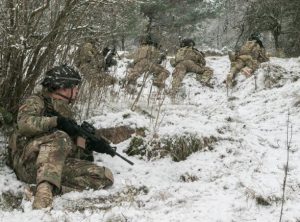 It was 0400 hours, and the entire Brigade Combat Team (BCT) was preparing to defend along its forward boundary. This after an exhausting three-day rapid deployment from their forward staging bases in Germany had everyone already on edge. In short, nothing had gone as expected or as planned for in the Operations Plan (OPLAN).
It was 0400 hours, and the entire Brigade Combat Team (BCT) was preparing to defend along its forward boundary. This after an exhausting three-day rapid deployment from their forward staging bases in Germany had everyone already on edge. In short, nothing had gone as expected or as planned for in the Operations Plan (OPLAN).
 The UBRA’s, short for Unified Belorussian Russian Alliance’s, 323rd Tank Division was a mere 68 kilometers from the BCT’s Forward Line of Troops or FLOT. They would be in the BCT’s primary engagement area in six hours. Between 1EU DIV and the EU’s Expeditionary Air Force’s efforts, nothing was slowing UBRA’s advance towards the critical seaport city of Gdansk, Poland.
The UBRA’s, short for Unified Belorussian Russian Alliance’s, 323rd Tank Division was a mere 68 kilometers from the BCT’s Forward Line of Troops or FLOT. They would be in the BCT’s primary engagement area in six hours. Between 1EU DIV and the EU’s Expeditionary Air Force’s efforts, nothing was slowing UBRA’s advance towards the critical seaport city of Gdansk, Poland.
 All the assumptions about air supremacy and cyber domination went out the window after the first UBRA tactical Electromagnetic Pulse (EMP) weapon detonated over Vilnius, Lithuania, 48 hours prior. A brilliant strategic move, the EMP fried every unshielded computer networked system the Allied Forces possessed. The Coalition AI Partner Network, so heavily relied on to execute the OPLAN, was inaccessible, as was every weapon system that linked to it. Right about now, Bob wished that CAITT was one of those systems.
All the assumptions about air supremacy and cyber domination went out the window after the first UBRA tactical Electromagnetic Pulse (EMP) weapon detonated over Vilnius, Lithuania, 48 hours prior. A brilliant strategic move, the EMP fried every unshielded computer networked system the Allied Forces possessed. The Coalition AI Partner Network, so heavily relied on to execute the OPLAN, was inaccessible, as was every weapon system that linked to it. Right about now, Bob wished that CAITT was one of those systems.
Luckily for him and his boss, Colonel Steph “Duke” Ducalis, CAITT was designed with an internal Faraday shield preventing it and most of the U.S. Army’s other AI systems from suffering the same catastrophic damage. Unfortunately, the EU Armed Forces did not heed the same warnings and indicators. They were essentially crippled as they fervently worked to repair the damage. With the majority of U.S. military might committed to the Pacific Theatre, Colonel Ducalis’ BCT, a holdover from the old NATO alliance, was the lone American combat unit forward deployed in Western Europe. Alone and unafraid, as they say.
“Sir…” asked CAITT, snapping Bob out of his fatigue induced musings, “all data still indicates that engaging with our M56 Long-Range High-Velocity Missiles against the 323rd’s logistical assembly areas in Elblag will compel them to defeat. I estimate their advance will cease approximately 18 hours after direct fire battle commences. Given all of the variables, this is the optimal targeting solution.” Bob really hated how CAITT dispassionately stated her “optimal targeting solution,” in that sultry female tone. Clearly, that same software engineer who had ensured CAITT was durable also had a soft spot for British accents.
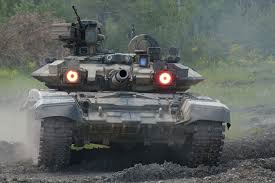 “CAITT, that makes no sense!” Bob stated exasperatedly. “The 323rd has approximately 250 T-90 MBTs — even if they expend all their fuel and munitions in that 18 hours, they will still overrun our defensive positions in less than six. We only have a single armored battalion with 35 FMC LAV3s. Even if they meet 3-1 K-kill ratios, we will not be able to hold our position. If they dislodge the LAVs, the dismounted infantrymen won’t stand a chance. We need to target the C2 nodes of their lead tank regiment now with
“CAITT, that makes no sense!” Bob stated exasperatedly. “The 323rd has approximately 250 T-90 MBTs — even if they expend all their fuel and munitions in that 18 hours, they will still overrun our defensive positions in less than six. We only have a single armored battalion with 35 FMC LAV3s. Even if they meet 3-1 K-kill ratios, we will not be able to hold our position. If they dislodge the LAVs, the dismounted infantrymen won’t stand a chance. We need to target the C2 nodes of their lead tank regiment now with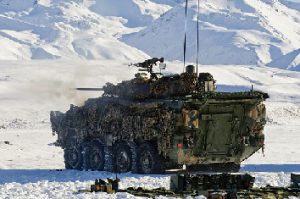 the M56s. If we can neutralize their centralized command and control and delay their rate of march, it may give the EUAF enough time to get us those CAS and AI sorties they promised,” replied Bob. “That’s the right play, space for time.”
the M56s. If we can neutralize their centralized command and control and delay their rate of march, it may give the EUAF enough time to get us those CAS and AI sorties they promised,” replied Bob. “That’s the right play, space for time.”
“I am sorry Mr. Menendez, I have no connection to the coalition network and cannot get a status update for the next Air Tasking Order. There is no confirmation that our Air Support Requests were received. I am issuing the target nominations to 2-142 HIMARS, they are moving towards their Position Areas Artillery 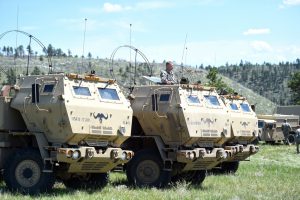 now, airspace coordination is proceeding, and Colonel Ducalis is receiving his Commander’s Intervention Brief now. Pending his override there is nothing you can do.” CAITTs response almost sounded condescending to Bob; but then again, he remembered a time when human staff officers made recommendations to the boss, not smart-ass video game consoles.
now, airspace coordination is proceeding, and Colonel Ducalis is receiving his Commander’s Intervention Brief now. Pending his override there is nothing you can do.” CAITTs response almost sounded condescending to Bob; but then again, he remembered a time when human staff officers made recommendations to the boss, not smart-ass video game consoles.
“Chief, shouldn’t we just go with CAITTs solution? I mean she has all the raw data from the S2’s threat template and the weaponeering guidances that you built. CAITT is the joint program of record that we have to use, don’t we?” asked Captain Austin. Bob did not blame the young man for saying that. After all, this is what the Army wanted, staff officers that were more technicians and data managers than tacticians. The young man was simply not trained to question the AI’s conclusions.

“No sir, we should not, and by the way, I really hate how you call it a she,” answered Bob as he pondered his dilemma. Dammit! I’m the freaking Targeting Officer; I own this process, not this stupid thing… he thought for about five seconds before his instincts reasserted control of his senses.
Quickly jumping out of his chair, Bob left Captain Austin to oversee the data refinement and went outside to seek out the Commander’s Joint Lightweight Tactical Vehicle (JLTV). It took him a moment to locate it under the winter camouflage shielding, since Polish winters were just as brutal as advertised.
I must be getting old, Bob mused to himself, the cold air biting into his face. After twenty-five years of service, despite countless combat deployments in the Middle East, he was starting to get complacent. It was easy to think like young Captain Austin. He never should have trusted CAITT in the first place. It was so easy to let it make the decisions for you that many just stopped thinking altogether. The CIB would be Bob’s last chance to convince the boss that CAITT’s solution was wrong and he was right.
 Bob entered the camo shield behind the JLTV constructing his argument to the boss in his mind. Colonel Ducalis had no time to entertain lengthy debate, this Bob knew. The fight was moving just too fast. Information is the currency of decision-making, and he would at best get about twenty seconds to make his case before something else grabbed the boss’s attention. CAITT would already be running the targeting solution straight to the boss via his Commanders Oculatory Device, jokingly called “COD,” referencing the old bawdy medieval term. Colonel Ducalis, already wearing the COD when Bob came in, was oblivious to everything else around him. Designed to construct a virtual and interactive battlefield environment, the COD worked almost
Bob entered the camo shield behind the JLTV constructing his argument to the boss in his mind. Colonel Ducalis had no time to entertain lengthy debate, this Bob knew. The fight was moving just too fast. Information is the currency of decision-making, and he would at best get about twenty seconds to make his case before something else grabbed the boss’s attention. CAITT would already be running the targeting solution straight to the boss via his Commanders Oculatory Device, jokingly called “COD,” referencing the old bawdy medieval term. Colonel Ducalis, already wearing the COD when Bob came in, was oblivious to everything else around him. Designed to construct a virtual and interactive battlefield environment, the COD worked almost  too well. Even as Bob came in, CAITT was constructing the virtual battlefield, displaying missile aimpoints, HIMARs firing positions, airspace coordination measures, and detailed damage predictions for the target areas.
too well. Even as Bob came in, CAITT was constructing the virtual battlefield, displaying missile aimpoints, HIMARs firing positions, airspace coordination measures, and detailed damage predictions for the target areas.
Bob could not understand how one person could absorb all that visual information in one sitting, but Colonel Ducalis was an exceptional commander. Standing nearby was the boss’s ever-present guardian, Major Lawrence Atlee, BCT XO, acting as always like a consigliere to his boss. His annoyance at Bob’s presence was evident by the scowl he received as he entered unannounced and, more egregiously, unrequested by him.
“Chief, what do you need?” asked Atlee, in his typically hurried tone, indicating that the boss should not be disturbed for all but the most serious reasons.
“Sir, it’s imperative I talk to the boss right now,” Bob demanded, somewhat out of breath — again, old age catching up. Without providing a reason to the XO, Bob moved directly to Colonel Ducalis and gently touched his arm. One did not shake a Brigade Commander, especially a former West Point Rugby player the size of Duke. The XO was not pleased.
“Bob, what’s up? I was just reviewing CAITT’s targeting solution,” said Duke as he lifted the COD off his face and saw his very distraught looking Targeting Officer. That’s hopeful, thought Bob, most Commanders would not even have bothered, simply letting the AI execute its solution.
Bob took a moment to compose himself and as he was about to pitch his case Atlee stepped in, “Sir, I’m very sorry. Chief here was just trying to let you know that he was ready to proceed.” Then turning to Bob he said in a manner that would not be confused as optional, “He was just leaving.”
Bob seized his chance as Duke looked right at him. They had served together for a long time. Bob remembered when Duke had asked him to come down from the 1EU Division Staff to fill his targeting officer billet. Undoubtedly, Duke trusted him and genuinely wanted to know what his concern was when he remove the COD in the first place. Bob owed it to him to give it to him straight.
 “Sir, that is not correct,” Bob said speaking hurriedly. “We have a serious problem. CAITT’s targeting solution is completely wrong. The variables and assumptions were all predicated on the EUAF having air and cyber superiority. Those plans went out the window the second that EMP detonated. With all those aircraft down for CPU hardware replacement and software re-installs, those data points are now irrelevant. CAITT doesn’t know how long that will take because it is delinked from the Coalition’s AI Partner Network. I managed to get a low-frequency transmission established with Colonel Collins in Warsaw, and he thinks they can get us some sorties in the next six hours.
“Sir, that is not correct,” Bob said speaking hurriedly. “We have a serious problem. CAITT’s targeting solution is completely wrong. The variables and assumptions were all predicated on the EUAF having air and cyber superiority. Those plans went out the window the second that EMP detonated. With all those aircraft down for CPU hardware replacement and software re-installs, those data points are now irrelevant. CAITT doesn’t know how long that will take because it is delinked from the Coalition’s AI Partner Network. I managed to get a low-frequency transmission established with Colonel Collins in Warsaw, and he thinks they can get us some sorties in the next six hours.  CAITTs solution is ignoring the time versus space dynamic and going with a simple comparison of forces mathematical model. I’m betting it thinks that our casualties will be within acceptable limits after the 373rd expends all of its pre-staged consumable fuel and ammo. It thinks that we can hold our position if we cut off their re-supply. It may be right, but our losses will render us combat ineffective and unable to hold while 1EU DIV reconsolidates behind us.
CAITTs solution is ignoring the time versus space dynamic and going with a simple comparison of forces mathematical model. I’m betting it thinks that our casualties will be within acceptable limits after the 373rd expends all of its pre-staged consumable fuel and ammo. It thinks that we can hold our position if we cut off their re-supply. It may be right, but our losses will render us combat ineffective and unable to hold while 1EU DIV reconsolidates behind us.
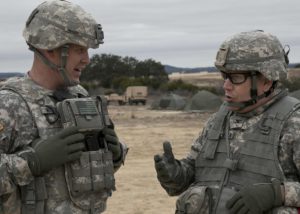 “We need to implement this High Payoff Target List and Attack Guidance immediately disrupting and attriting their lead maneuver formations. Sir, we need to play for time and space,” Bob explained, hoping the sports analogy resonated while simultaneously accessing his Fires Forearm Display or FFaD, transmitting the data to Duke’s COD with a wave of his hand.
“We need to implement this High Payoff Target List and Attack Guidance immediately disrupting and attriting their lead maneuver formations. Sir, we need to play for time and space,” Bob explained, hoping the sports analogy resonated while simultaneously accessing his Fires Forearm Display or FFaD, transmitting the data to Duke’s COD with a wave of his hand.
“Sir, I am not sure we should be deviating from the AI solution,” Atlee started to interject. “To be candid, and no offense to Mr. Menendez, the Army is eliminating their billets anyway since CAITT was fielded last year, same as they did for all the BCT S3s and FSOs. Their type of thinking is just not needed anymore, now that we have CAITT to do it for us.” Bob was amazed at how Major Atlee stated this dispassionately.
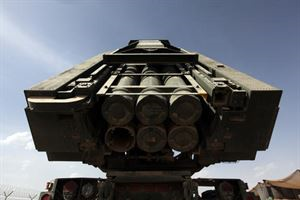 Bob, realizing where this was going, took a knee next to Duke. He was clearly as tired as everyone else. Bob leaned in to speak while Duke started to review the new battlespace geometries and combat projections in his COD. “Duke,” Bob said in a low tone of voice so Major Atlee could not easily overhear him, “We’ve been friends a long time, I’ve never given you a bad recommendation. Please, override CAITT. LTC Givens can reposition his HIMARS battalion, but he has to start doing it now. This is our only chance; once those missiles are gone, we won’t get them back.”
Bob, realizing where this was going, took a knee next to Duke. He was clearly as tired as everyone else. Bob leaned in to speak while Duke started to review the new battlespace geometries and combat projections in his COD. “Duke,” Bob said in a low tone of voice so Major Atlee could not easily overhear him, “We’ve been friends a long time, I’ve never given you a bad recommendation. Please, override CAITT. LTC Givens can reposition his HIMARS battalion, but he has to start doing it now. This is our only chance; once those missiles are gone, we won’t get them back.”
He then stood up and patiently waited. Bob understood that he had pushed things as far as he could. Duke was a good man, a fine commander, and would make the right decision, Bob was certain of it.
Taking off his COD and rubbing his eyes, Duke leaned back and sighed heavily. The weight of command taking its full effect.
“CAITT,” stated Colonel Ducalis. “I am initiating Falcon 06’s override prerogative. Issue Chief Menendez’s targeting solution to LTC Givens immediately. 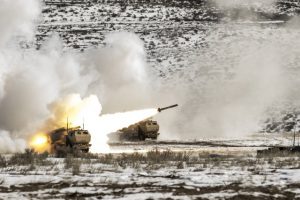 Larry, get a hold of 1EU DIV and tell them we can hold our positions for 24 hours. After that, we may have to withdraw, but we will live to fight another day. Right now, trading time for space may not be the optimal strategy, but it is the human one. Let’s Go!”
Larry, get a hold of 1EU DIV and tell them we can hold our positions for 24 hours. After that, we may have to withdraw, but we will live to fight another day. Right now, trading time for space may not be the optimal strategy, but it is the human one. Let’s Go!”
If you enjoyed reading this post, please also see the following blog posts:
• An Appropriate Level of Trust…
• A Primer on Humanity: Iron Man versus Terminator
• Takeaways Learned about the Future of the AI Battlefield
• Leveraging Artificial Intelligence and Machine Learning to Meet Warfighter Needs
CW3 Jesse R. Crifasi is an active duty Field Artillery Warrant Officer. He has over 24 years in service and is currently serving as the Field Artillery Intelligence Officer (FAIO) for the 82nd Airborne Division.
The views expressed in this article are those of the author and do not reflect the official policy or position of the Department of the Army, DoD, or the U.S. Government.
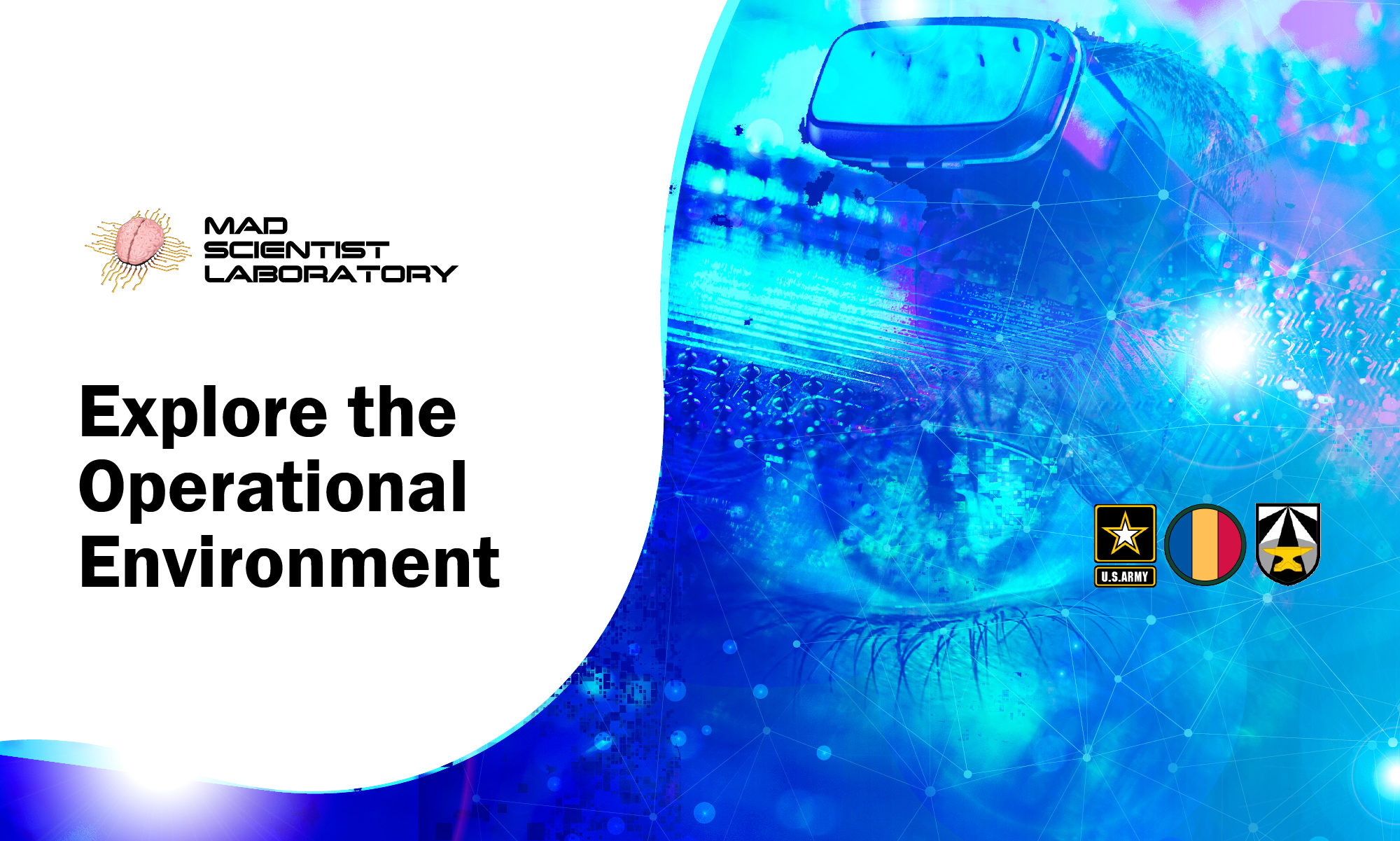
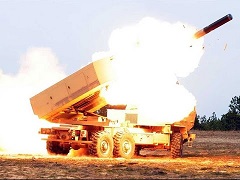


I’m very concerned that future AI initiatives will not give humans the opportunity to intervene as we’ve seen in this vignette. Fighting at machine speed may take us so far, so fast, that we humans will be considered as interfering in the processes and too slow in our judgments. We’ve already seen in one experiment that AI control of fires led us to expend ammunition at a much higher rate. And because the feedback of battle damage assessment into the system was not fast enough, the AI kept shooting at already-destroyed targets. If we begin to fight at machine speed, how do we humans keep abreast of the battle so that the system follows commander’s intent and our judgments to “steer” the system remain relevant?
Mr. Blanchard,
Thank you for your post. Could not agree more. Ultimately the challenge, as you allude to, will be in designing effective intervention points throughout an automated targeting process. We see this already with even rudimentary systems like AFATDS wherein proper guidances and filters must be thoroughly inputted prior ensuring human decision points are not bypassed. What this piece hopefully conveyed was people’s preference for ease and expediency over critical and introspective analysis, especially under stressful dynamics, such as high intensity ground combat. The real question is will we take the time to design an AI system that has effective intervention points or will we just “assume risk” and let it run itself? As a classical realist (some would say pessimist) I err on the side of the human propensity for taking the path of least resistance. Hopefully I am wrong. Appreciate your post. Thank you again sir.
JRC